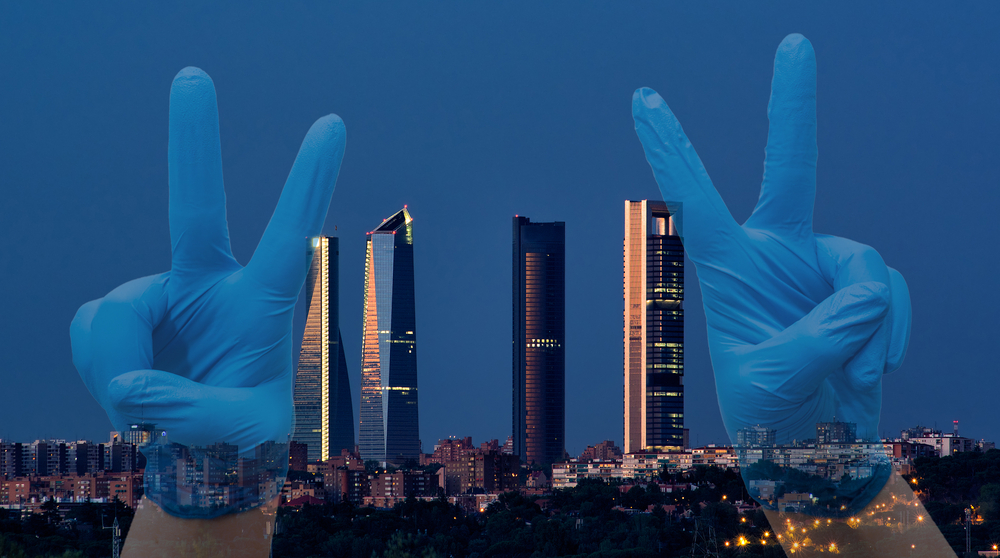In the City Journal, I have a short piece on the “Madrid model” in managing the pandemic. The region of Madrid has been quite exceptional because, during the second wave, it kept activities relatively more open than elsewhere in Europe. It did so not so much by taking a “wait and see” approach, which is what others tend to criticize and fear whenever a more libertarian minded take on the pandemic is hinted to, but by proactively hunting the virus, particularly through a system of wastewater screening to identify the hotspots of the infection. The local government bounded itself to a clear policy goal: keeping the region as open as possible. In order to meet this goal, it perhaps did more in terms confronting the virus, than those who chose to flatten the curve by locking down.
At the very beginning of the piece, I write:
The Covid-19 pandemic heralded for many, particularly in Europe, the “return of the state.” Nation-states were supposedly the natural and proper level for pandemic policymaking, as they supplied most of the subsidies keeping economic activity afloat during lockdowns. Early on, the most intense debates concerned which national response was best: the Italian model, the closest thing to a Chinese lockdown that a liberal democracy could manage; or the Swedish model, an almost laissez-faire approach. Few paid attention to how cities and regional governments responded. In Spain, however, it’s at the regional level that the pandemic’s most interesting and useful lessons may be found.
This is probably true elsewhere too. We spent a lot of time arguing over different “national” models, but there were nuances, and slowing contagion down was ultimately up to local government institutions. Perhaps in the next few years we will have more studies of how regions and cities actually coped with these challenges, and less on supposedly national approaches. In the US of course this is more apparent than in Europa.


READER COMMENTS
Thomas Lee Hutcheson
Oct 5 2021 at 4:26pm
Good points.
The proper level of decision making about restricting social and economic interactions is the area over which they take place, which is usually a city/country in the US. One of the ways our CDC failed us was in not providing cities/counties with guidelines/methodologies for how to adapt local policies to local conditions.
Todd Kreider
Oct 6 2021 at 11:31am
” and slowing contagion down was ultimately up to local government institutions.”
No country slowed the contagion down to any noticeable extent.
By the way, Spain has had 1,850 Covid deaths per million, Portugal 1,780 per million.
mark
Oct 6 2021 at 2:24pm
Yes and depends. Depends: In most states, the differences of local administration are smallish. Even cities have local decision-making-authority, their frame-work (media, law, taxes, subsidies) inside their nation-state and their incentive-structure is often pretty much the same. In Germany – where I worked as a “local lockdown-enforcer”, having lost my free-lance-teaching-post due to the lockdown – the (internally) declared aim of our 80-head “special lockdown force” was: “Präsenz zeigen”. Roughly “Show that we are there”. NOT: lock-down risky non-complying places. (“We do not want the papers to write our admin is closing Arab barbershops!”) – We had some part in pushing the mask-compliance in the shopping-zone a bit faster from 75 to 98%, I think. But assuming a lockdown locked down things in exactly the way it was put down in those local, provincial, national rulebooks – well, you may be right. And you may be wrong.
steve
Oct 6 2021 at 2:33pm
It looks to me like you are overstating the lack of mitigation efforts in Madrid. They didnt lift the limits on large venue capacity until 9/20 and they were completely eliminated 10/4 when they also lifted limits on restaurants and bars. They still require masks at indoor venues and no dancing yet at nightclubs. The Swedish model as laissez-faire is also, IMO, overstated. (One of many links available on this. Have to go through several to find everything.)
https://spanishnewstoday.com/madrid_eliminates_capacity_restrictions_in_bars_and_restaurants_1655955-a.html
I think your general point stands. We should have room for individual locations to handle things differently. If a given area wants to accept a lot more deaths in order to maintain a bit higher GDP they should be able to do that. What I would hope could be avoided when that happens is not dumping the costs/externalities on someone else. What we see in our area is that rural places stopped using masks/mitigation efforts a while ago. Then they didnt get vaccinated. With the surge in covid they had a lot of pts who needed hospitalized, especially for ICU care. Small rural hospitals cant manage covid ICU pts very well if they are at all sick so they get sent to city hospitals.
Steve
Comments are closed.